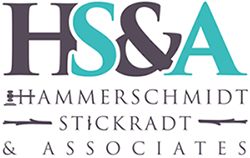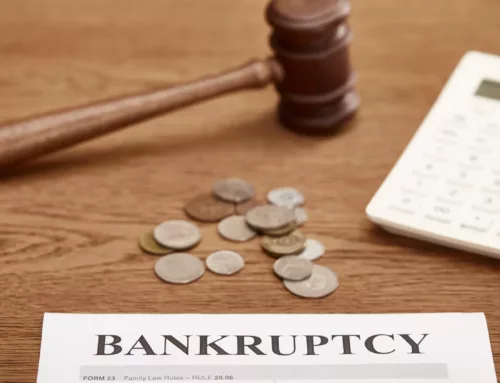If you have made debts that you are no longer able to fulfill, the U.S. Federal bankruptcy code offers you debt relief through filing for bankruptcy. The common chapters for personal bankruptcy are in Chapter 7 and Chapter 13.
Chapter 13 bankruptcy is called the wage earner’s bankruptcy because it simply reorganizes your debts into a repayment plan that is more doable than the original terms of the debt. Chapter 7 bankruptcy, on the other hand, is called liquidation bankruptcy because it involves liquidating assets to pay debts. Additionally, in contrast to bankruptcy Chapter 13, Chapter 7 offers debt relief through the discharge of debt.
We at Hammerschmidt Stickradt & Associates, a bankruptcy law firm in Royal Oak, Michigan, are committed to guiding you through bankruptcy. Consult with a Royal Oak, MI bankruptcy attorney today to know more about the different types of bankruptcy.
1. Credit Counselling
The first step for all individuals filing bankruptcy is to take credit counseling courses. These sessions are conducted by an agency approved by the U.S. Trustee Program and must be taken within 6 months before filing
2. Checking Eligibility
You then check if you qualify to file for a Chapter 7. These individuals are automatically qualified under the bankruptcy code:
- Disabled veterans who gained most of the debt in active duty or homeland defense duty,
- Business owners whose debts are mostly from the business,
- People with incomes below the state median income.
To check if you qualify for the last category, you must first compile your household’s total income. This includes all of your household’s salaries, financial aids received, child support proceeds, alimony, and so on. You then compare it to the state’s published median income level. For Michigan in 2021, it’s:
| Household Size | Monthly Income | Yearly Income |
| 1 | $4,429.92 | $53,159 |
| 2 | $5,516.50 | $66,198 |
| 3 | $6,623.67 | $79,484 |
| 4 | $8,164.17 | $97,970 |
| 5 and more | +$750 for each additional member | +$9,000 for each additional member |

For the means test calculation, you have to once again take your total household income, and subtract from it your deductible expenses which are sorted into four categories:
1. Payments to priority and secured creditors
Priority debts are debts that carry the most serious consequences if you do not pay for them. Such include income taxes and court fines. Secured debts are those that are backed by collateral such as mortgages and car loans.
2. Expenses according to the national standards established by the IRS
These are the living expenses established by the IRS. The IRS sets standard amounts for expenses going towards out-of-pocket medical bills, clothing, food, utilities, housing, among others.
3. Actual expenses
Of course, the amounts set by the IRS are not definite and may vary on a case-to-case basis. So, the extra expenditures for the necessities including those listed above are categorized under here, given that you can prove that they are necessary and reasonable expenses.
4. Administrative expenses
The expenses categorized here are those that you will have to pay if you were to file a Chapter 13 bankruptcy instead of Chapter 7. Essentially, this step tries to see if you can afford to file a Chapter 13.
You then subtract these expenses from your total household income. If the resulting amount is enough to pay for at least 25% of your total debt, you will not be qualified to file a Chapter 7 and will have to file a Chapter 13 bankruptcy. If it is not enough, you may proceed to file a Chapter 7.
The means test calculation is state-specific and will follow state law. This is why it is best to contact a local bankruptcy attorney. Hammerschmidt Stickradt & Associates is a law firm based in Royal Oak, Walled Lake, and Wyandotte, Michigan. We are committed to helping Michigan residents settle debt problems because their financial future is important to us.
3. Counseling and Forms
Once you have determined that you are qualified for Chapter 7 bankruptcy, you may begin the process of filing it. The requirements vary per state, so it is best to confirm with your local bankruptcy court beforehand. Generally, however, these include the means test form, finance form, and bankruptcy petition.
You should also start to collect the documents and forms that you will be needing including bank statements, vehicle titles, income tax returns for the last two years, paycheck stubs received, ideally, in the last 6 months, and a bankruptcy petition filed to the court to begin. It would also be good to have your bills for the last 90 days.
4. Trustee Appointment and Meeting of Creditors
Once you have filed your forms, your bankruptcy hearing will have officially begun. As soon as this happens, you will be placed under automatic stay which is a bankruptcy protection policy that protects you from creditor harassment and states that debt collectors may no longer contact you to collect your debts.
Also at this point, the court will assign to you a bankruptcy trustee who will be in charge of facilitating your bankruptcy filing. He will be responsible for sorting your assets into exempt and non-exempt properties.
Exempt assets are those that are necessary for you to keep on making a living. These include your house, a car, and your clothes. Exempt assets will be protected from repossession and will remain with you.
Nonexempt assets are the inverse- nonessentials and include high-value items such as collections, extra cars, and extra houses.
5. Debt Repayment
After your assets have been sorted as exempt and non-exempt, you will have the right to retain your non-exempt assets while your non-exempt assets will be seized by the trustee and liquidated to repay the debt you owed to your creditors.
6. Discharge of Remaining Debt
At this stage, finally, most of your debts will be discharged, after which, your creditors will no longer have the right to come after you, even in the future. Take note though that while most debts will be discharged, the US Bankruptcy Code lists 19 categories of debts that cannot be discharged including income tax debts and student loan debt.
7. After Bankruptcy
Of course, there are serious ramifications to filing a Chapter 7 bankruptcy. For instance, the bankruptcy report will be on your credit reports for the next 10 years and you will not be able to file for another Chapter 7 bankruptcy for 8 years after you have filed for the first.
We also suggest keeping bankruptcy documents so that you can protect yourself in case your creditors still come after you in the future when your debts have already been discharged.
It is for these reasons that we suggest thinking very critically before filing for a Chapter 7 bankruptcy because while it gives you a fresh start, it has serious effects that will affect you for a very long time.
If you need help and guidance in dealing with bankruptcy matters, don’t hesitate to contact a Royal Oak, Michigan bankruptcy attorney at Hammerschmidt Stickradt & Associates. We are committed to helping you settle your financial difficulties to get a new lease on a debt-free life.



